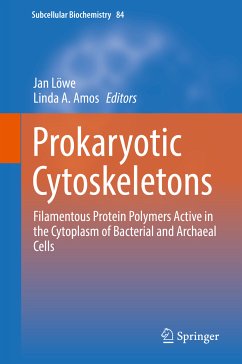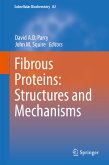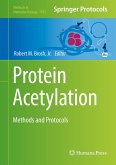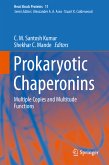Individual chapters, written by leading researchers, review the great advances made in the past 20-25 years, and still ongoing, to discover the architectures, dynamics and roles of filaments found in relevant model organisms. Others describe one of the families of dynamic filaments found in many species. The most common types of filament are deeply related to eukaryotic cytoskeletal proteins, notably actin and tubulin that polymerise and depolymerise under the control of nucleotide hydrolysis. Related systems are found to perform a variety of roles, depending on the organisms. Surprisingly, prokaryotes all lack the molecular motors associated with eukaryotic F-actin and microtubules. Archaea, but not bacteria, also have active filaments related to the eukaryotic ESCRT system. Non-dynamic fibres, including intermediate filament-like structures, are known to occur in some bacteria.. Details of known filament structures are discussed and related to what has been established about their molecular mechanisms, including current controversies. The final chapter covers the use of some of these dynamic filaments in Systems Biology research. The level of information in all chapters is suitable both for active researchers and for advanced students in courses involving bacterial or archaeal physiology, molecular microbiology, structural cell biology, molecular motility or evolution.
Chapter 3 of this book is open access under a CC BY 4.0 license.
Dieser Download kann aus rechtlichen Gründen nur mit Rechnungsadresse in A, B, BG, CY, CZ, D, DK, EW, E, FIN, F, GR, HR, H, IRL, I, LT, L, LR, M, NL, PL, P, R, S, SLO, SK ausgeliefert werden.









